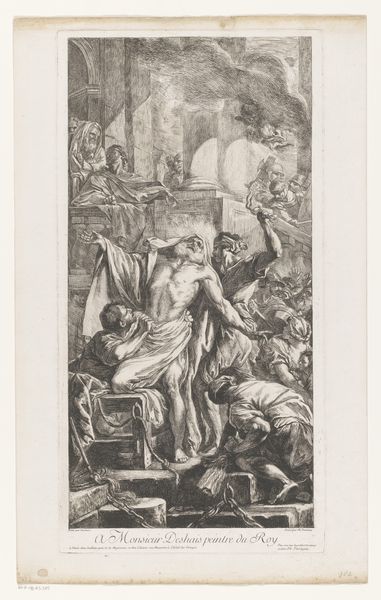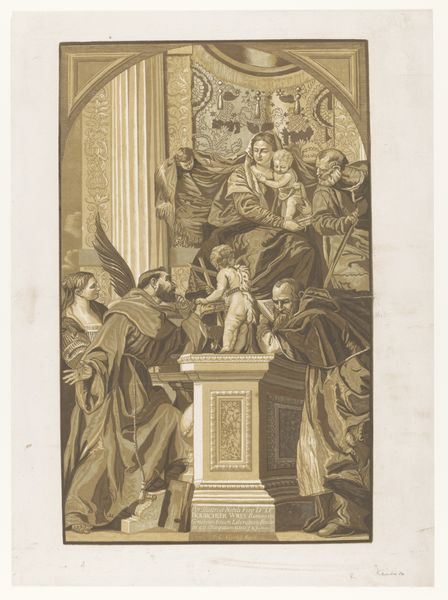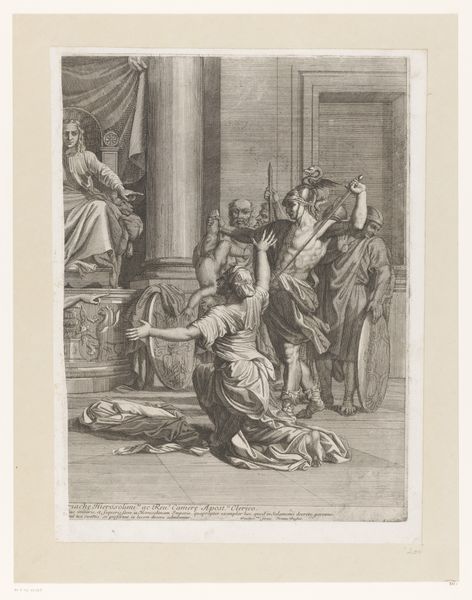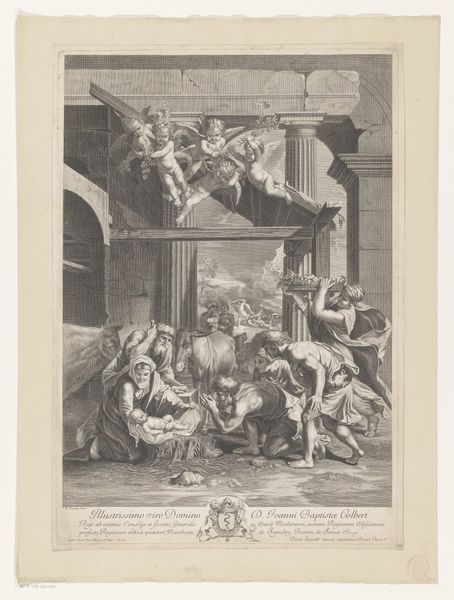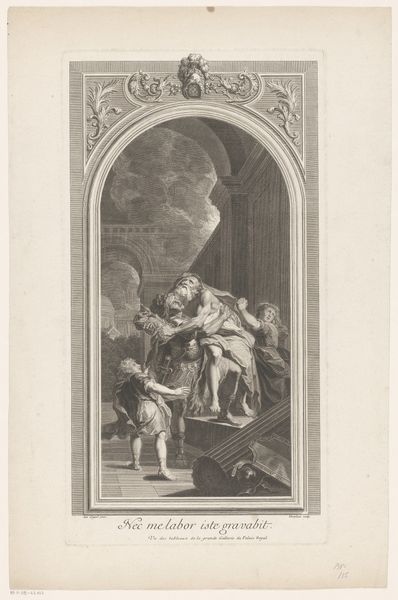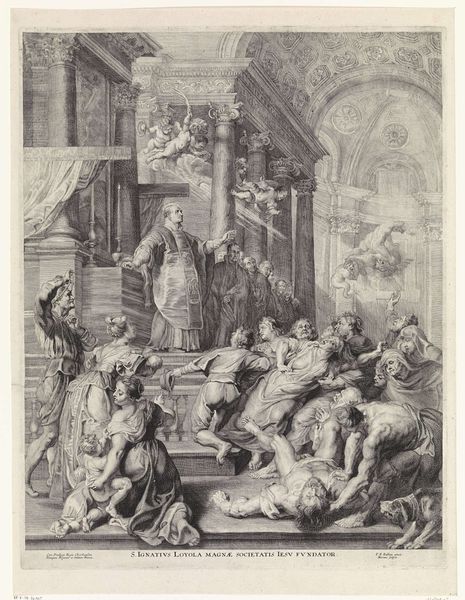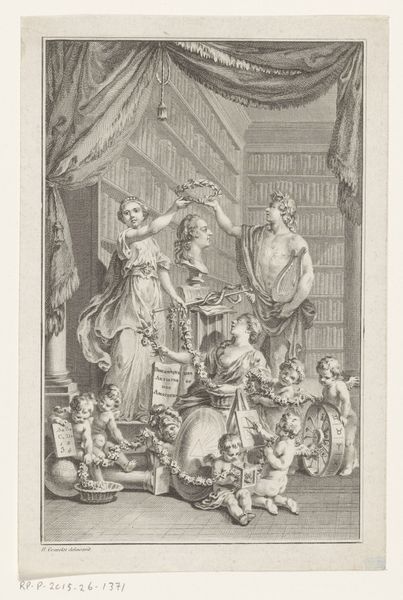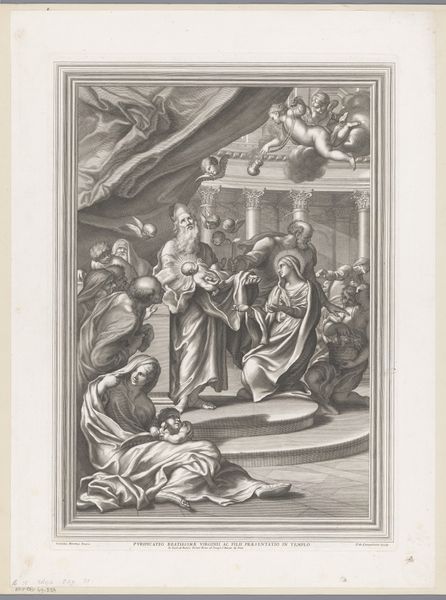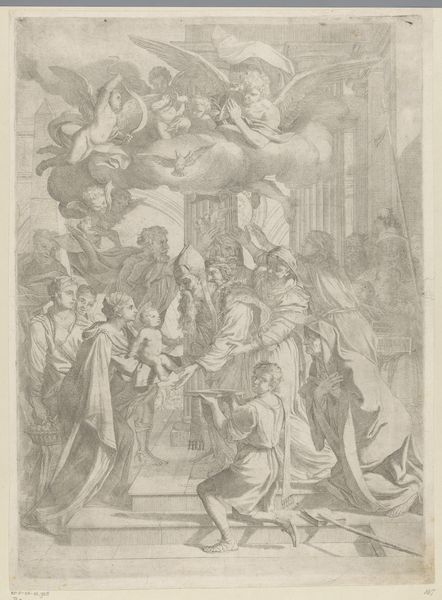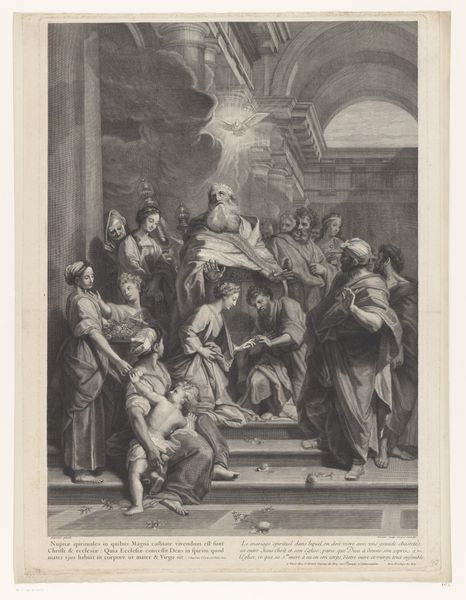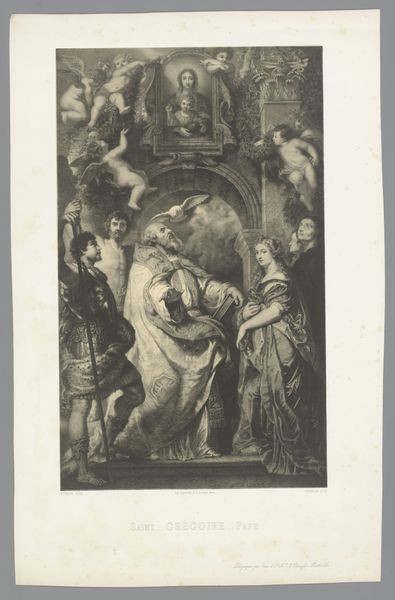
Allegorische voorstelling met Armand-Jean du Plessis hertog van Richelieu, in het gezelschap van Apollo en Neptunus (linker bovendeel) 1616 - 1670
0:00
0:00
gregoirehuret
Rijksmuseum
engraving
#
portrait
#
allegory
#
baroque
#
figuration
#
form
#
line
#
history-painting
#
engraving
Dimensions: height 591 mm, width 366 mm
Copyright: Rijks Museum: Open Domain
Editor: Here we have an engraving, "Allegorical Representation with Armand-Jean du Plessis, Duke of Richelieu, in the Company of Apollo and Neptune" by Grégoire Huret, dating somewhere between 1616 and 1670. It's striking how Richelieu is presented, almost godlike, amidst all these classical figures. What catches your eye when you look at it? Curator: The iconography is dense, isn't it? The dove overhead symbolizes the Holy Spirit, often linked to divine guidance or approval. Notice how the figures below him hold up what appear to be shields or mirrors, reflecting, perhaps, aspects of his power or influence? What do you make of that symbolism? Editor: It's like they're amplifying his image, suggesting his power is reflected in all aspects of society. Is that a typical Baroque strategy? Curator: Precisely! Baroque art frequently employed allegory to legitimize authority. Richelieu, a powerful figure in his time, is being presented not just as a politician but as divinely ordained, associating his authority with the cultural weight of classical gods and Christian symbolism. Apollo, representing arts and knowledge and Neptune for worldly dominion through the seas. Doesn't it strike you as almost propagandistic in its intent? Editor: Absolutely. It’s less a portrait and more a constructed narrative about power and influence. The weight of symbolism really underscores that point. Curator: And notice that many faces bear resemblance. These portraits become memory triggers. What stories do they intend to perpetuate? Editor: I hadn't thought of that - but yes, how images shape our historical memory, fantastic! I'll definitely be looking at Baroque art differently from now on. Curator: Indeed! Each symbol is a thread in a tapestry woven to convey very specific meanings and intentions for the future, too.
Comments
No comments
Be the first to comment and join the conversation on the ultimate creative platform.
